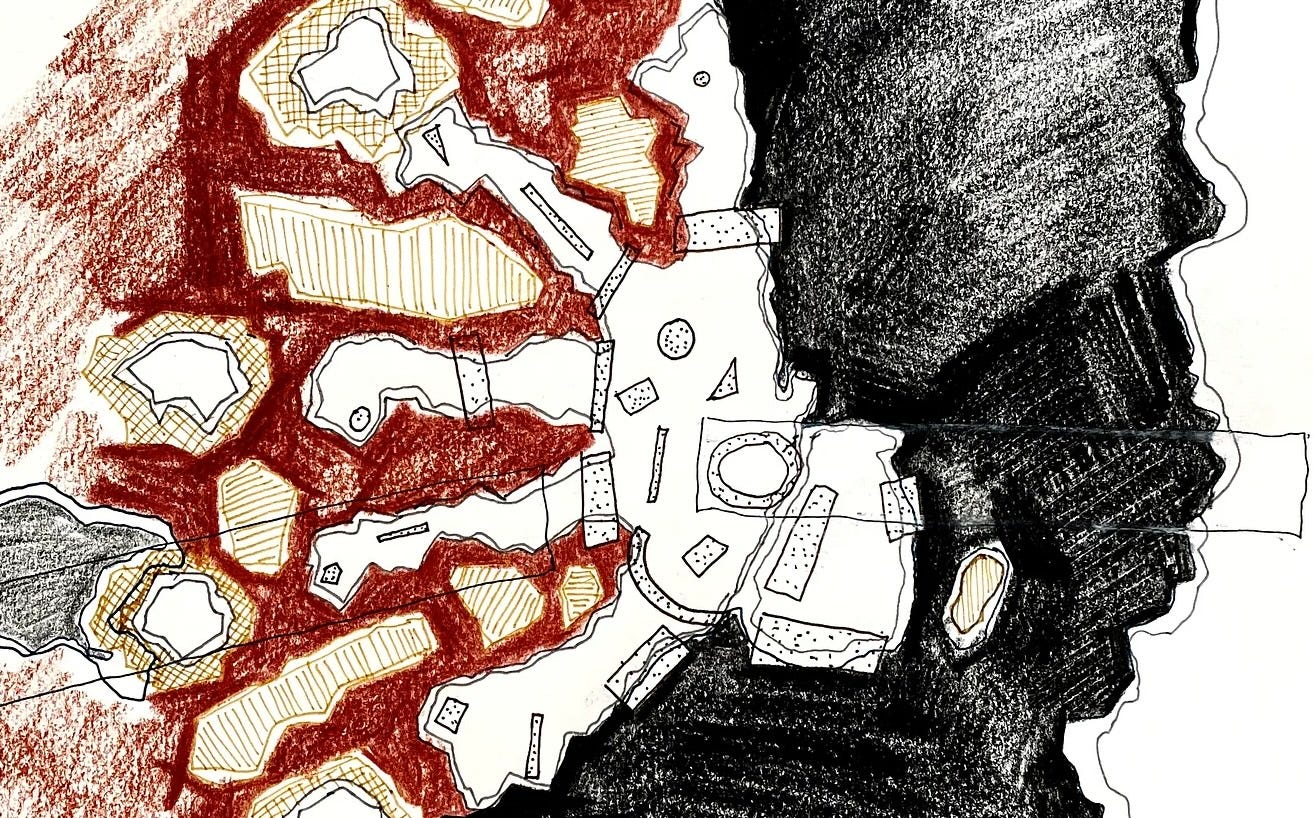There is No End to Copenhagen
Fingerplan 2.0
The potentials of the city are endless! As global populations grow, and the number of people living in urban conditions continues to increase, the city holds a promise to solve ongoing challenges of climate change, resource scarcity, immobility, people migration and social imbalance. An ‘urban new deal’ could become the ultimate agreement with the future – a regional planning paradigm for urban growth within the planetary boundaries. The city should be the perfect social, economic and environmental infrastructure for present civilization to thrive without limiting equal possibilities for the generations to come. We have no other option than to believe in the city!
Meanwhile, in Copenhagen a sixth finger is growing out of the original five-finger-plan for regional growth around the Danish capital. An amphibious web of roads, detached houses, industry and agriculture, extends from the fingers into the green wedges between them, limiting natural habitats, fragmenting natural corridors and causing ecosystem services to collapse. At present, there is no end to the growth of Copenhagen. A revised Fingerplan needs to balance this trend with future global needs, into a contemporary futureproof plan for regional growth – within the planetary boundaries.
The promising hand
The Finger Plan was a welfare strategy to create a democratic growth engine with living space and accessibility for everyone through the S-train network connecting the historic Copenhagen with its suburbs. The five fingers would keep urbanization defined and make room for green wedges to flourish in between. Several societal tendencies in the region, in Denmark, in Europe and globally has affected the strategic robustness of the original Finger Plan. Today Greater Copenhagen has evolved into a modern metropolis that challenges all the original boundaries of the Finger Plan.
Mobility: We move differently today, in more individual, unpredictable patterns and often across borders which require enormous flexibility in the mobility network. Commuting patterns: We work partly from home and place greater demands on the local urban environment and less on the services of Copenhagen inner city core. Family patterns: There are more divorced people, people living alone and a dramatically aging population, which requires smaller,affordable housing, new types of voluntary communities build on civil services, new types of meeting places, hybrid functionality and more intimate urban communities on the periphery. Work-life balance: We have more leisure time and need recreational areas for activities, rest and relaxation. People-planet balance: Workplaces in the knowledge economy are increasingly located in growing business parks. The efficiency and scale of Danish agricultural industry is disconnecting people from nature and animals from habitats, making coherent nature areas almost absent today. Biodiversity is declining rapidly, and roads continue to be built for the growing car fleet. 'Endless Copenhagen' has left its mark.
Copenhagen Forecasts
Based on the latest report by Curt Liliegreen, Boligøkonomisk Videnscenter, up to 265,000 new inhabitants will move to Greater Copenhagen by 2040. A central dilemma for the Finger Plan of the Future. Where will the newcomers live? How will they move between home and work? Where will they recreate? How will they thrive? The challenges must be addressed by revisiting the Finger Plan's fundamental idea of transit-oriented urban development. A robust foundation for creating fluent, flexible and instant mobility at scale across varied urban areas and between a new polycentric network of urban centers. The success behind the idea of investment in infrastructure in the Copenhagen metro system and the O3 light-rail, should be scaled to span the entire region, creating a seamless system of attractive, efficient and much greener mobility service across the 34 Municipalities of the region.
Today, the foundation of the Fingerplan is strongly challenged by the above trends, which make it difficult to plan a futureproof mobility model that can actually support people's behavioural patterns. Transit-oriented urban development should be thought of in a broader and more polycentric way balanced with an equal need to establish, strengthen and support green corridors for biodivesity. By capturing other trends such as new patterns of working from home that have created a growing need for strengthened local areas where you can walk and cycle to everything, the opportunities in the new hybrid ways of working can help transform old patterns of congestion and require new local collaborations for meeting places and flexible workplaces. Overall, this could strengthen a more sustainable mobility in the region.
The overall dilemma for settlement, the biodiversity crisis and the prevailing trends are multilayered, cross-bordering and should be expanded to the perspective of the entire Øresund region, including the wellbeing of the waters separating us. A new emphasis on the relation between Copenhagen and Malmö, should attempt to grasp the complexity of the region through an articulation of historical conditions, potentials and challenges.




